11 Incredible Ancient Egyptian Temples To Visit
8 min readAncient Egyptian temples are the highlight of any trip to Egypt. And they’re just as impressive in real life as they are in photos.
But there are SO MANY different Ancient Egyptian temples across the country that it’s very easy to get overwhelmed. And all those temples start to look the same after a few days of whirlwind sightseeing.
Visitors to Egypt even complain of being “templed out” after trekking across Luxor with a packed itinerary.
So how can you avoid the infamous temple fatigue? And how do you organize that perfect Ancient Egyptian itinerary that works for you?
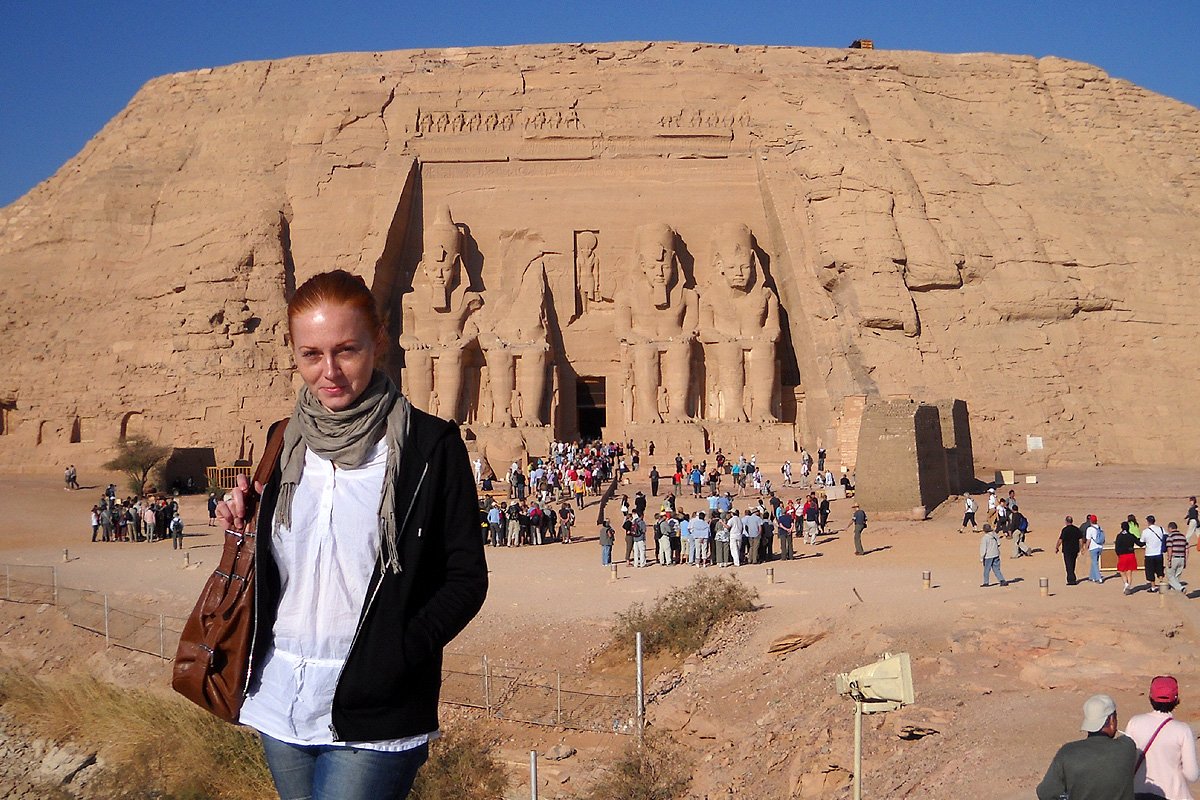
I’m a longtime expat living for over a decade in Egypt. And I’ve visited all the famous temples – and hidden gems – numerous times.
And this is my ultimate guide to all the Ancient Egyptian temples you must visit – including insider tips and underrated gems off the beaten path. Use it to enrich your trip to these ancient wonders – without the overwhelm!
Ancient Egyptian temples to visit:
1. Karnak Temple
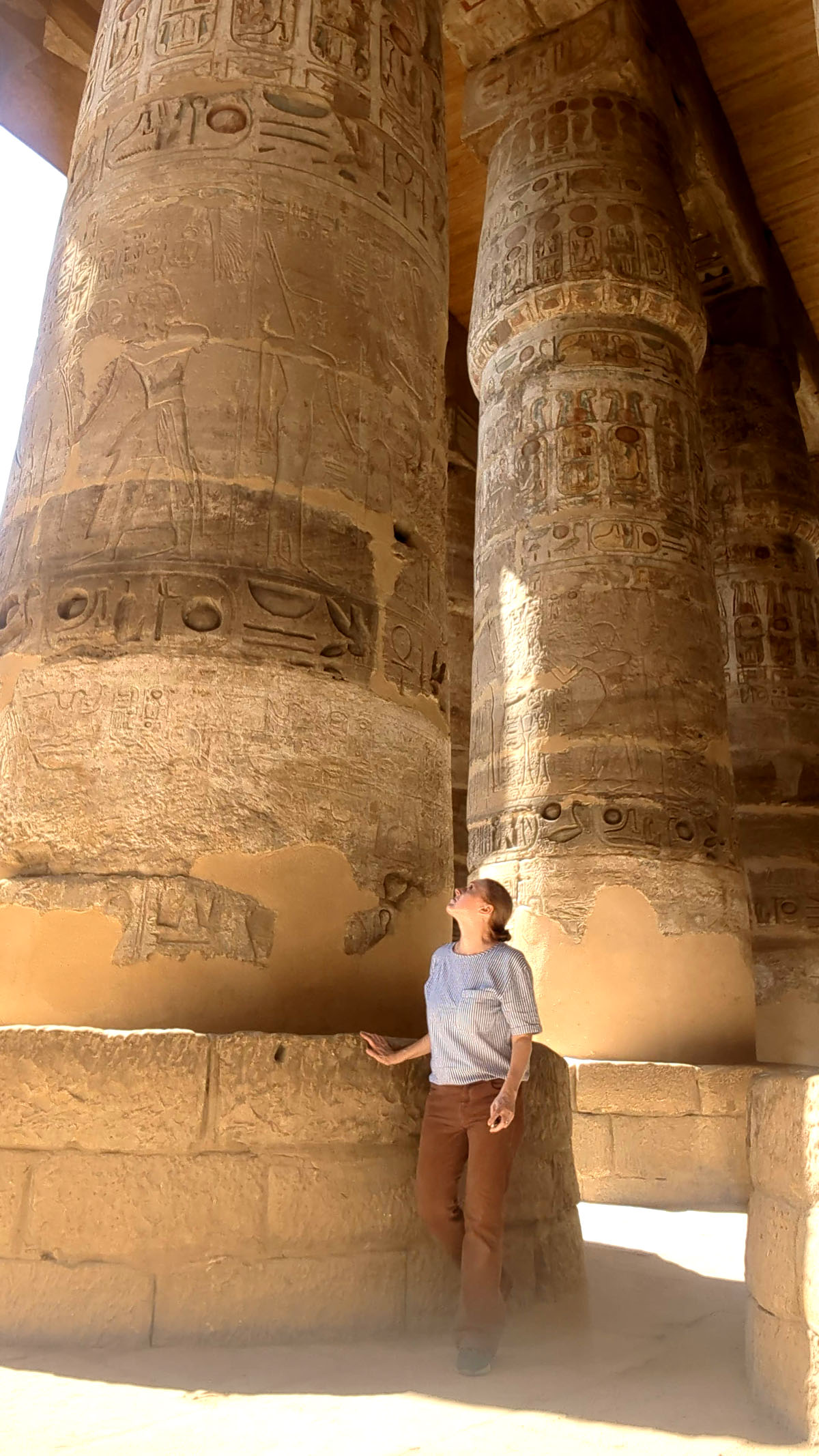
Location: Luxor
Included in a Nile cruise: yes
Visit as a day trip from: Aswan (3 hours) or Hurghada (4 hours)
The massive complex of Karnak is the most dazzling monument in all of Ancient Egypt – it was built by some 30 different pharaohs over a span of 1,500 years.
Karnak is the second largest temple in the world (second only to Angkor Wat). And it contains layers of history as each pharaoh added on dazzling new expansions in a bid to outshine their predecessor.
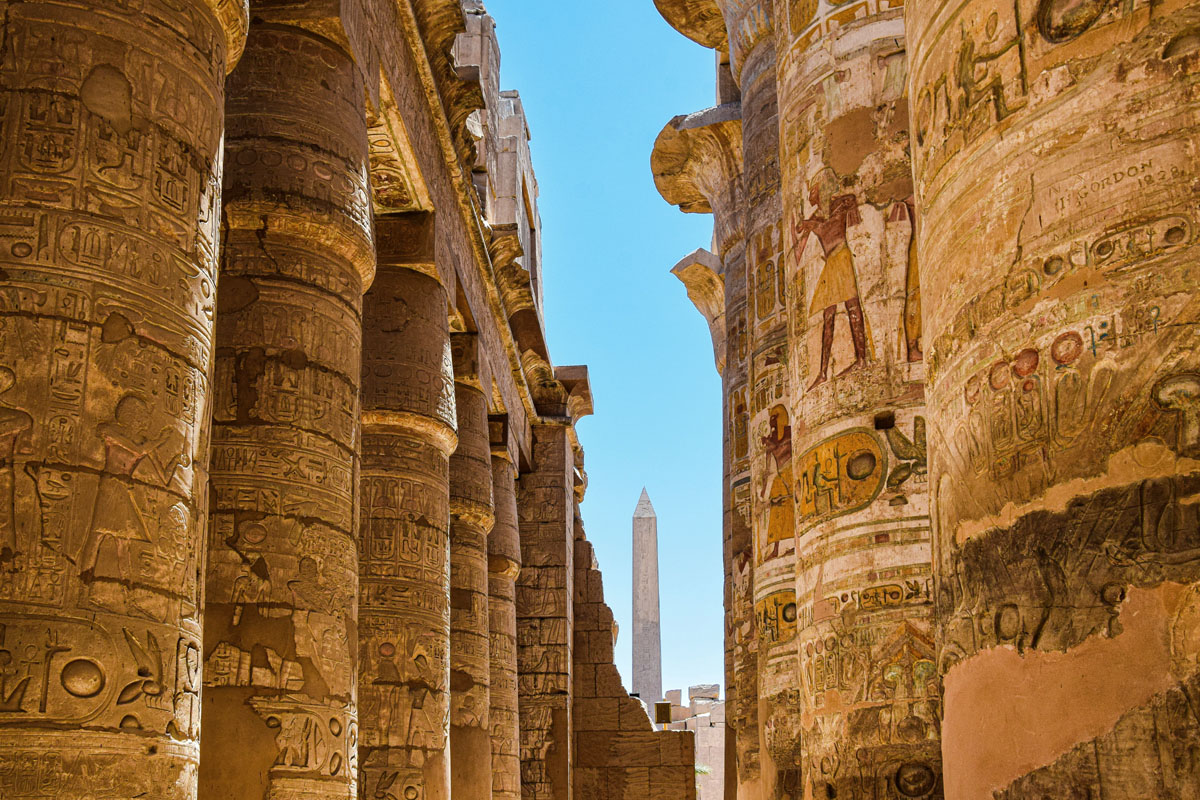
It’s an awe-inspiring temple with a famous hypostyle hall that contains a labyrinth of 134 massive columns in astonishingly preserved color. There’s also a famous obelisk erected by Hatshepsut and a long avenue of human-headed sphinxes that lead to nearby Luxor Temple.
The last time I visited Luxor, I spent an entire day exploring Karnak and its precincts (with breaks for hibiscus). And honestly I can’t wait to go back – it’s that enormous and fascinating.
2. Luxor Temple
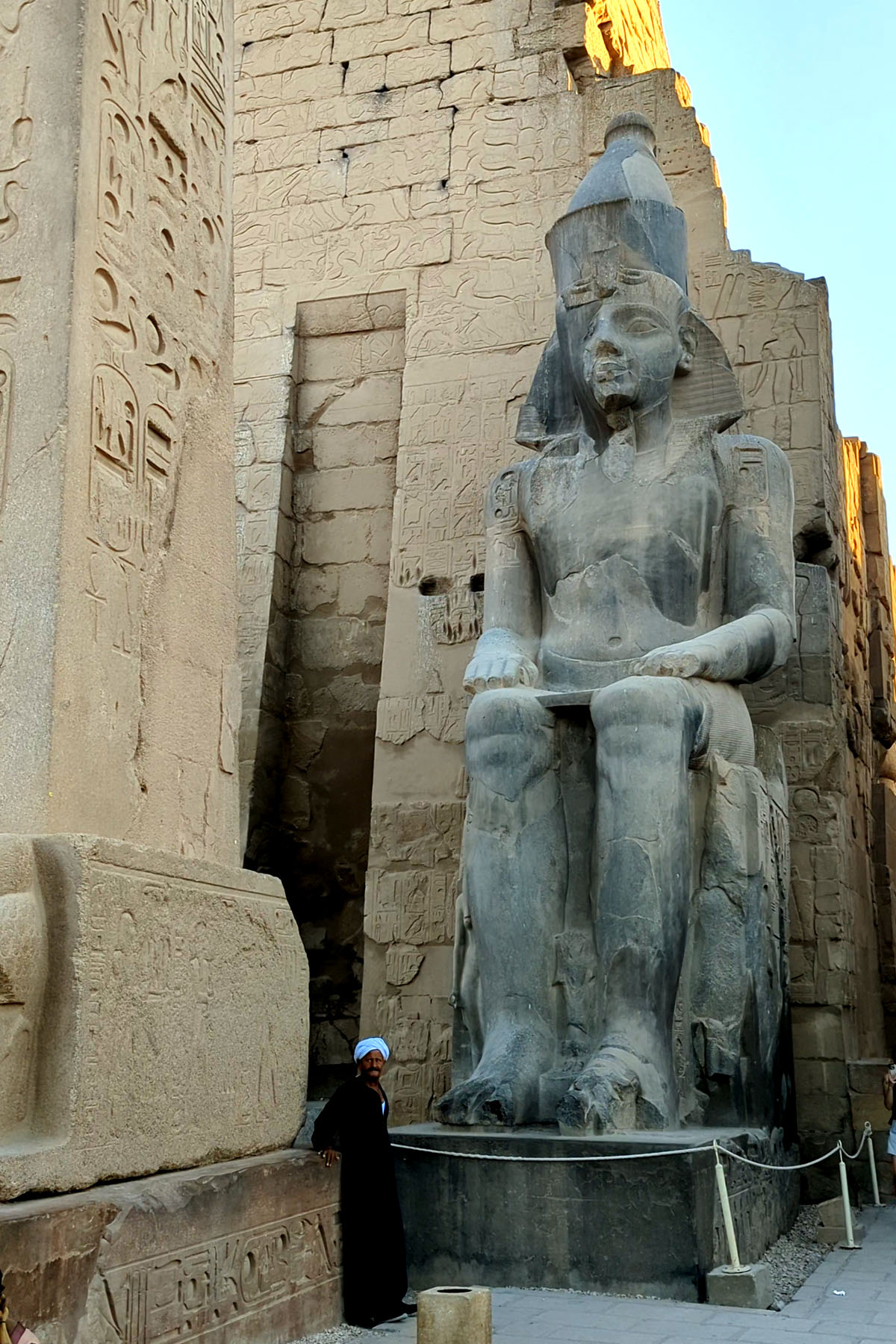
Location: Luxor
Included in a Nile cruise: yes
Visit as a day trip from: Aswan (3 hours) or Hurghada (4 hours)
Luxor Temple is a testament to pharaonic might – and the very place where Egypt’s pharaohs were likely crowned and celebrated during lavish festivals.
Luxor Temple is dedicated to the rejuvenation of kingship and contains grand pylons, enormous statues of the pharaohs and a hypostyle hall.
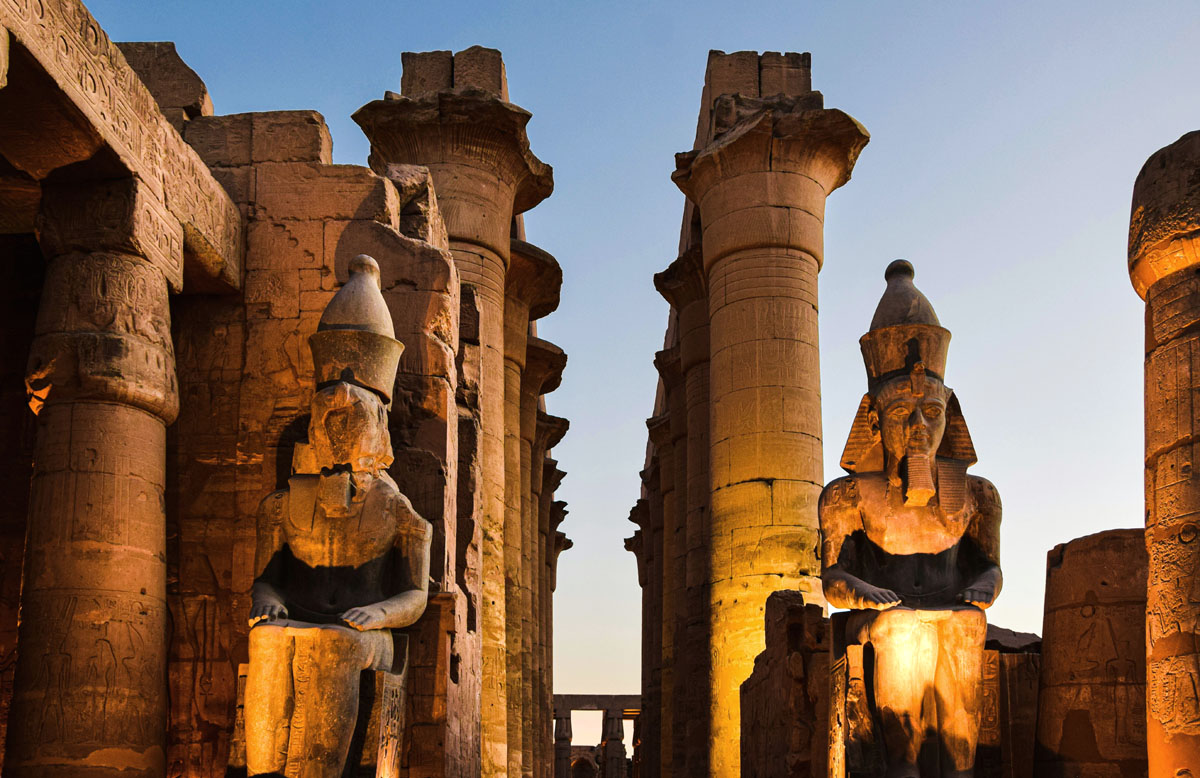
Built around 1400 BCE, Luxor Temple isn’t dedicated to any particular god or deified pharaoh. instead, it’s the site of the grand festival of Opet that celebrated the pharaoh’s divine link to the sun god Amun.
Luxor Temple also includes the 13th-century Abu Haggag Mosque, built in medieval times right inside the temple, which means the entire site is host to some 4,000 years of continuous religious worship.
3. Hatshepsut Temple

Location: Luxor
Included in a Nile cruise: yes
Visit as a day trip from: Aswan (3 hours) or Hurghada (4 hours)
This mortuary temple of the famous female pharaoh is carved deep into the cliffs – and it’s one of the masterpieces of ancient architecture.
Set inside the regal limestone cliffs of Deir Al Bahri, the Temple of Hatshepsut pays tribute to both the Queen Hatshepsut and the creator sun god Amun.
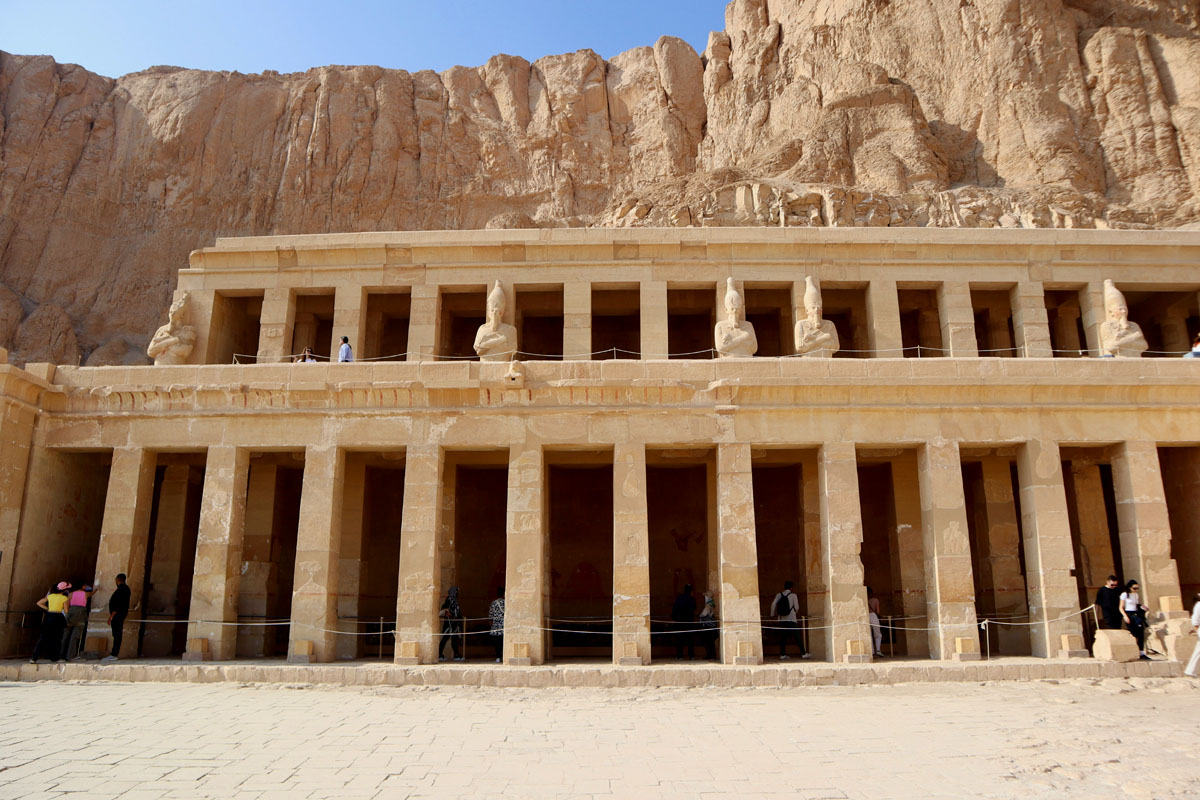
The temple has beautifully carved colonnades, statues of Hatshepsut, an altar dedicated to Ra and a splendid sanctuary of Amun. It’s covered with reliefs depicting Hatshepsut’s reign including her expedition to Punt, where she gathered a booty of exotic riches.
I love how Hatshepsut Temple looks almost modern with its straight lines and classic columns. It’s a surreal sight to see it standing tall and defying time in the middle of the rocky cliffs and deserts of the West Bank.
4. Abu Simbel
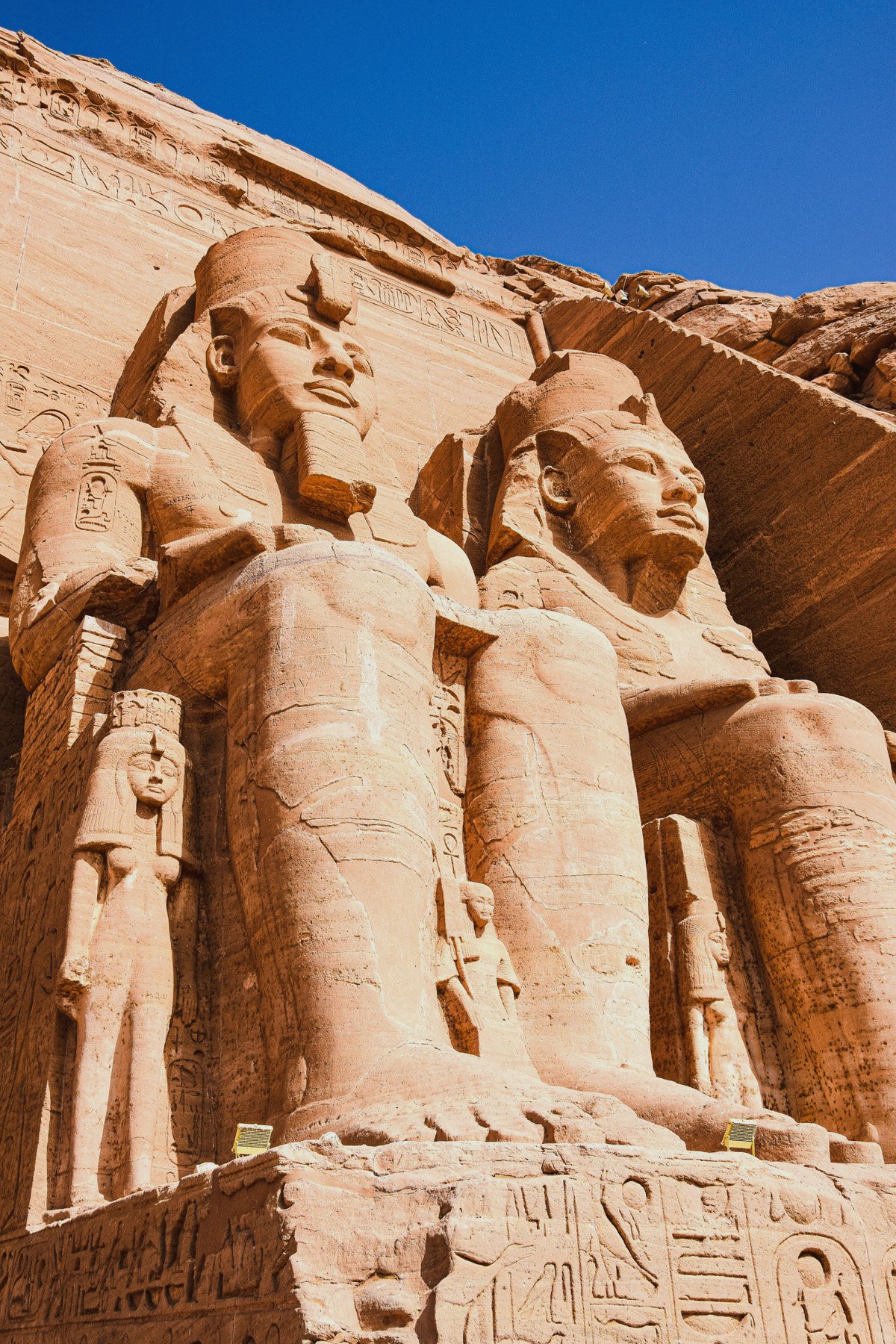
Location: Abu Simbel
Included in a Nile cruise: no (it’s offered as optional)
Visit as a day trip from: Aswan (3.5 hours)
The enormous rock-cut temples at Abu Simbel are one of the most breathtaking sights in all of Egypt.
It’s so grand that you can even spot it from the airplane (if you’re sitting on the left side). People always let out a collective gasp when they first catch sight of this ancient wonder.
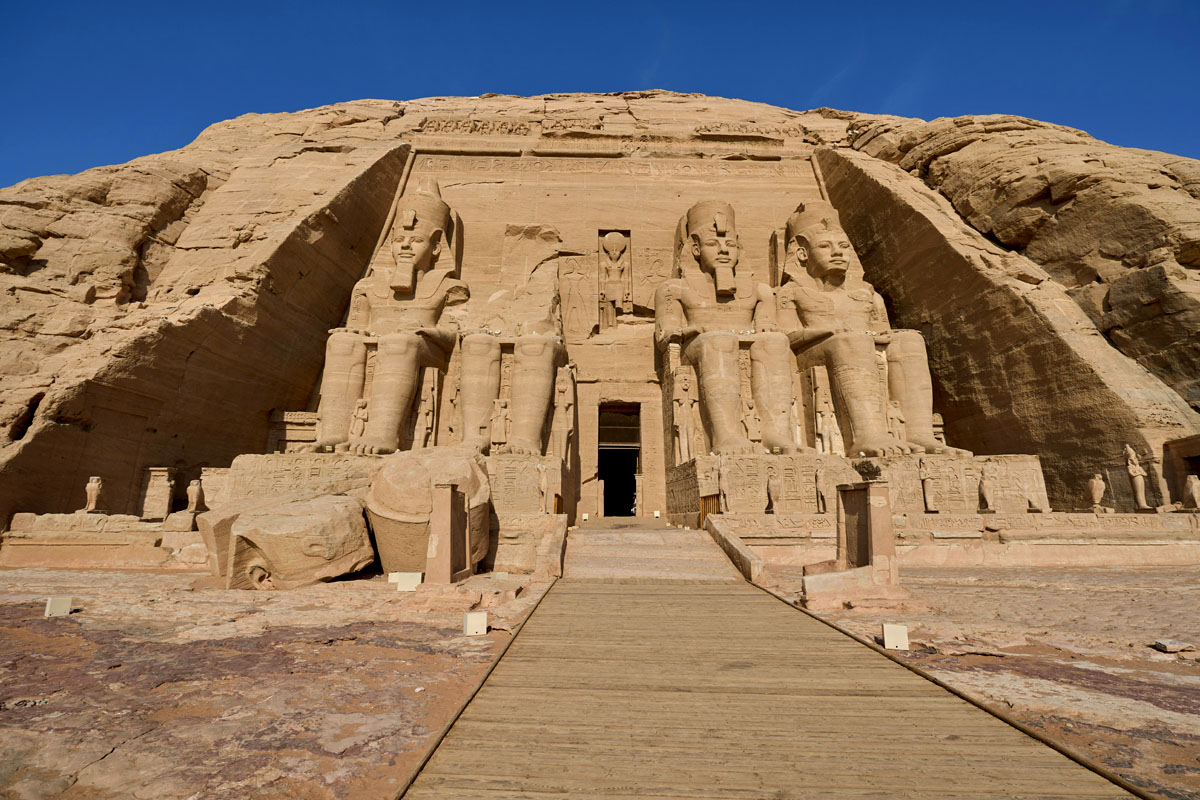
Built by Ramses II in the 13th century BCE, the Great Temple has four gigantic statues of Ramses II on his throne. Amazingly, the sanctuary inside the temple is positioned so the sun illuminates the sculptures twice a year.
Abu Simbel also has an incredible rescue story. The temples were nearly lost in the 1960s amid rising Nile waters. But they were entirely relocated in an impressive project in 1967.
5. Philae Temple
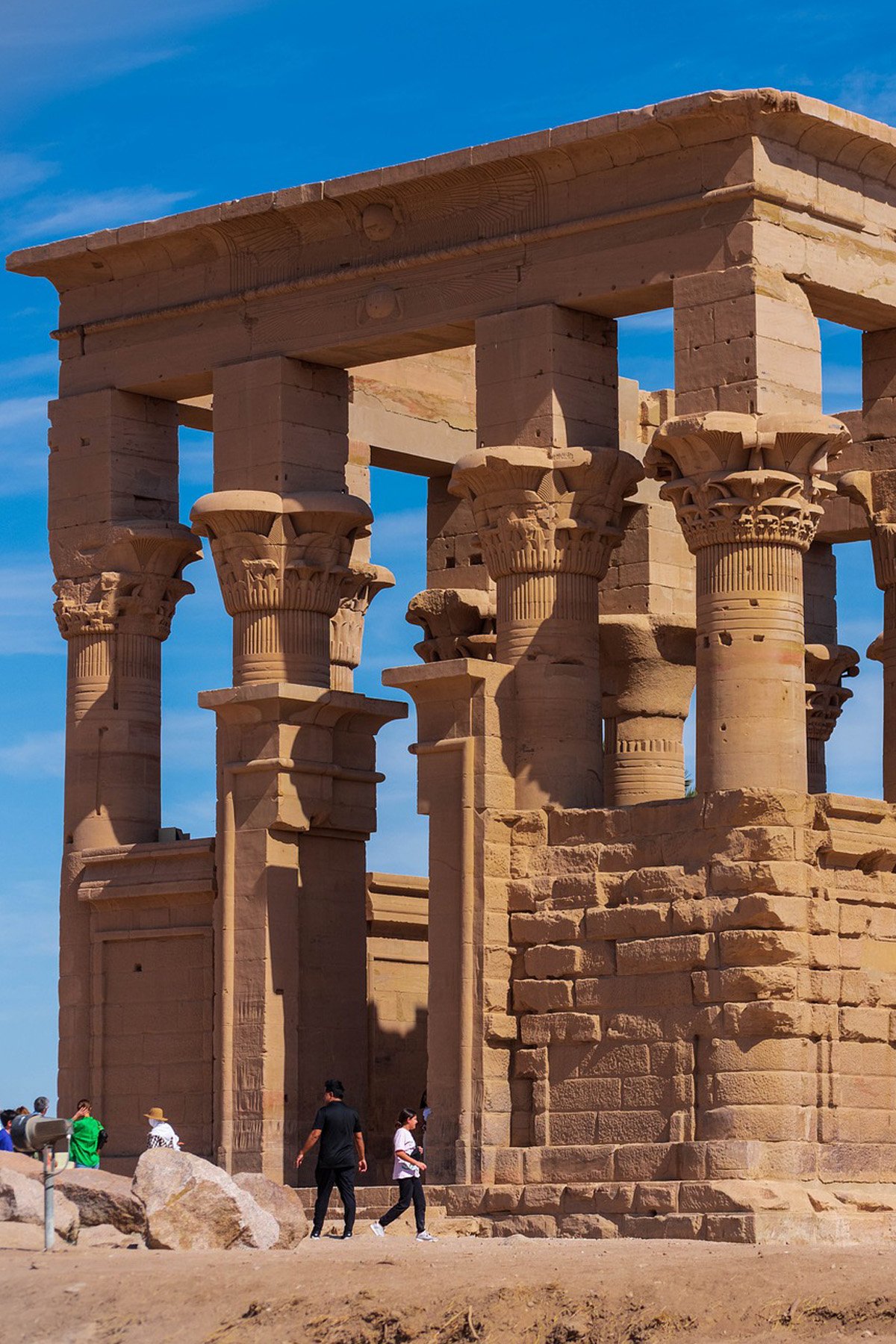
Location: Aswan
Included in a Nile cruise: yes
Visit as a day trip from: Luxor (3 hours)
Nestled on a tiny island in Aswan, Philae Temple is a beautiful tribute to Isis surrounded by luscious greenery and Nile waters.
Built by the Macedonian king Ptolemy II, the temple was one of the last active Ancient Egyptian temples where the old pagan gods were worshiped.
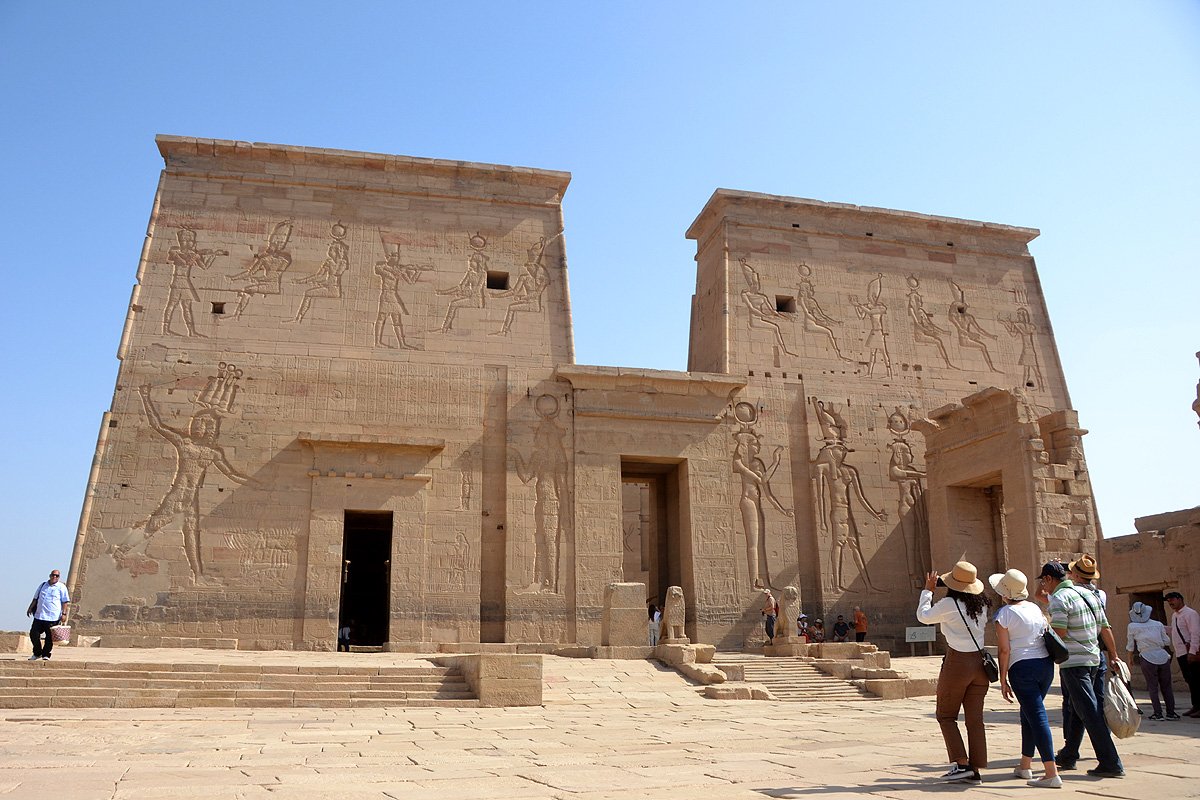
Take a motorboat to this island and explore the temples, columns and hieroglyphics that line this architectural gem. And don’t miss the gorgeous grey temple cats (fed by the custodians) wandering amid the ruins.
I think Philae is Egypt’s most charming and romantic temple. It’s always such a treat to spend an afternoon that starts with a laidback boat ride and ends with iced hibiscus at the cafes alongside Trajan’s Kiosk.
6. Temple of Edfu
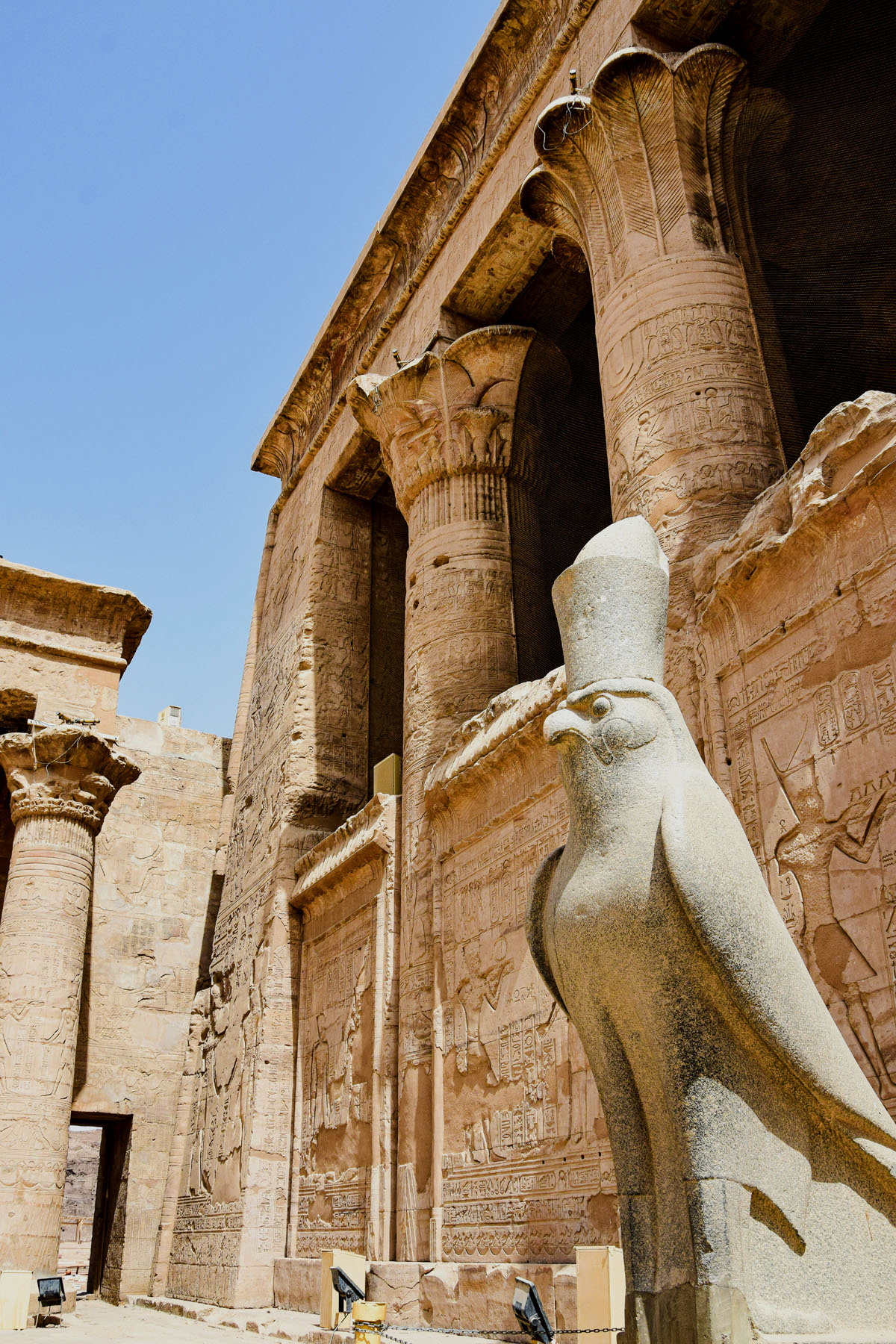
Location: Edfu
Included in a Nile cruise: yes
Visit as a day trip from: Luxor (2.5 hours) or Aswan (2 hours)
This Ptolemaic-era temple is a beautiful tribute to the falcon god Horus and contains many well-preserved reliefs of his tumultuous life.
Edfu has towering pylons and regal statues of the falcon god. But there are also intimate and touching reliefs of a baby Horus breastfeeding from his divine mother Isis.
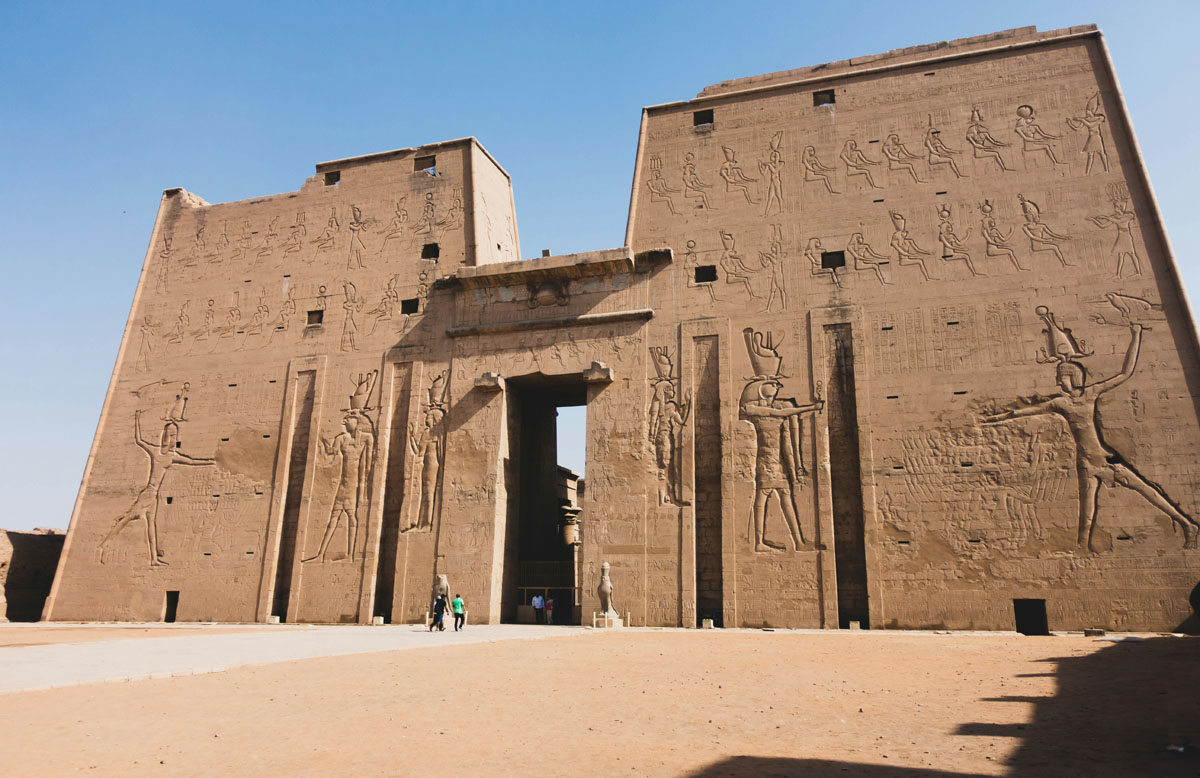
Edfu is a gorgeous Nile-side temple that’s one of the best preserved in Egypt. It was untouched for millennia as it lay buried and protected by the desert sands. It was finally uncovered in 1860.
You can climb to the roof for sweeping views of the Nile Valley.
7. Kom Ombo
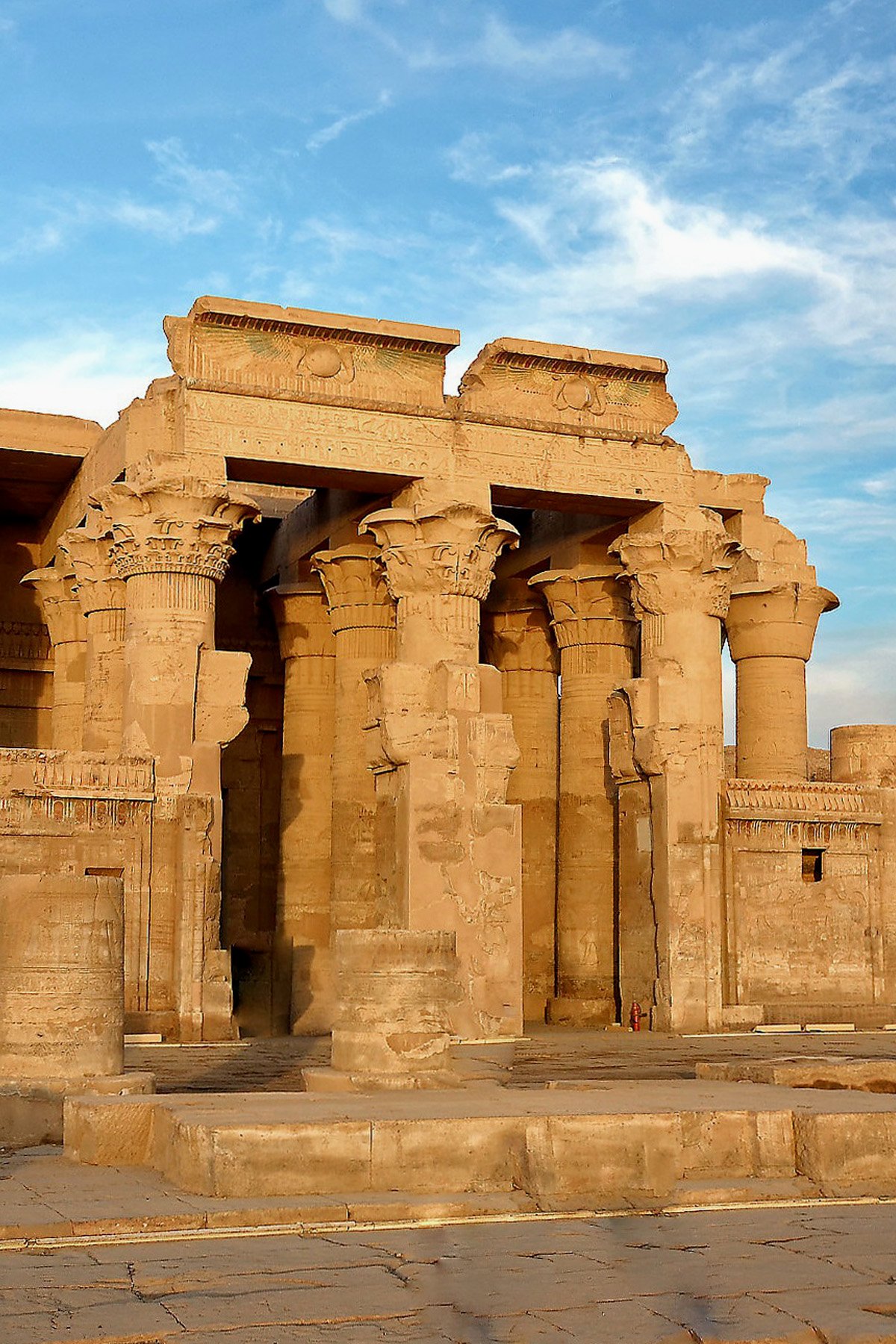
Location: Kom Ombo
Included in a Nile cruise: yes
Visit as a day trip from: Luxor (3 hours) or Aswan (1 hour)
The Temple of Kom Ombo is a magnificent monument along the Nile dedicated to the crocodile and falcon gods – and a must-see on your Egypt itinerary.
Lined with intricate columns and sanctuaries to animal gods, Kom Ombo is a stunning Nile-side temple that’s one of the most unique in Egypt.
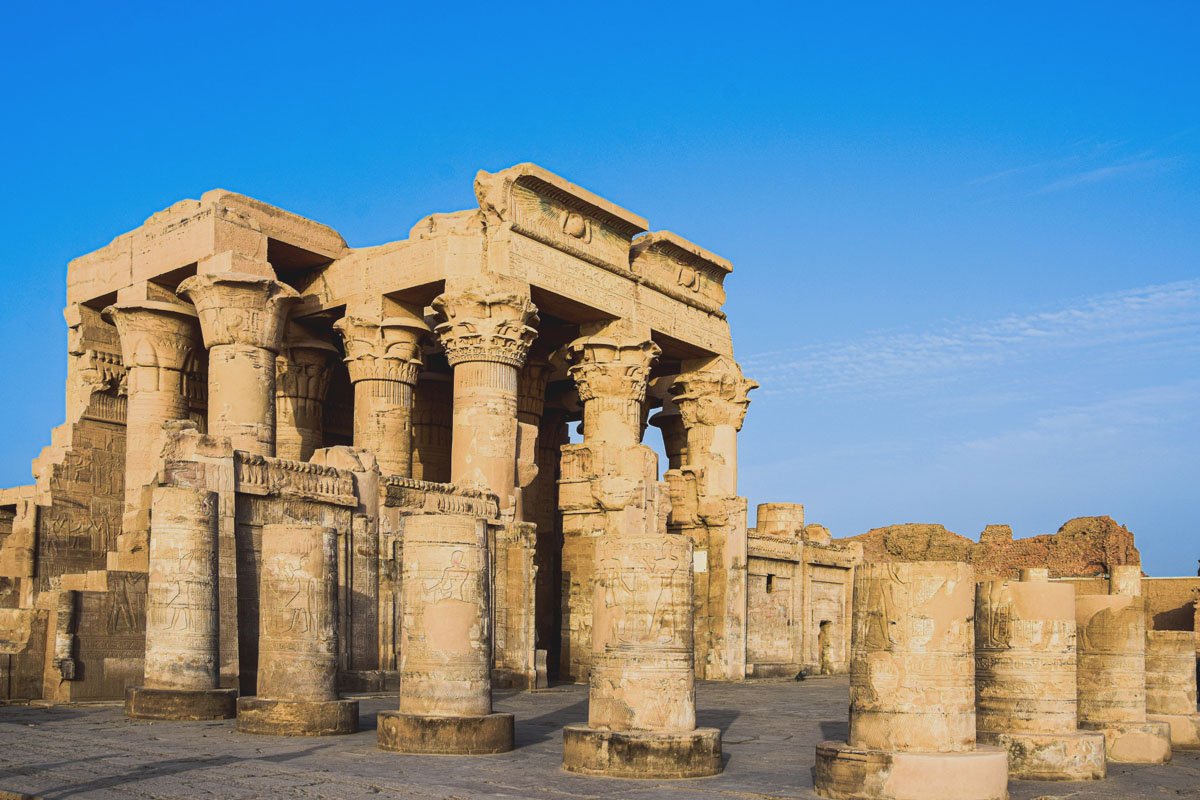
Kom Ombo is the only known temple dedicated to two different deities – the crocodile and falcon gods.
Divided with perfect symmetry into two parts, the right side of the temple is dedicated to Sobek, the crocodile god of fertility and creator of the world. The left side is dedicated to Horus the Elder (aka Haroeris) the falcon god of the skies.
8. Dendera Temple
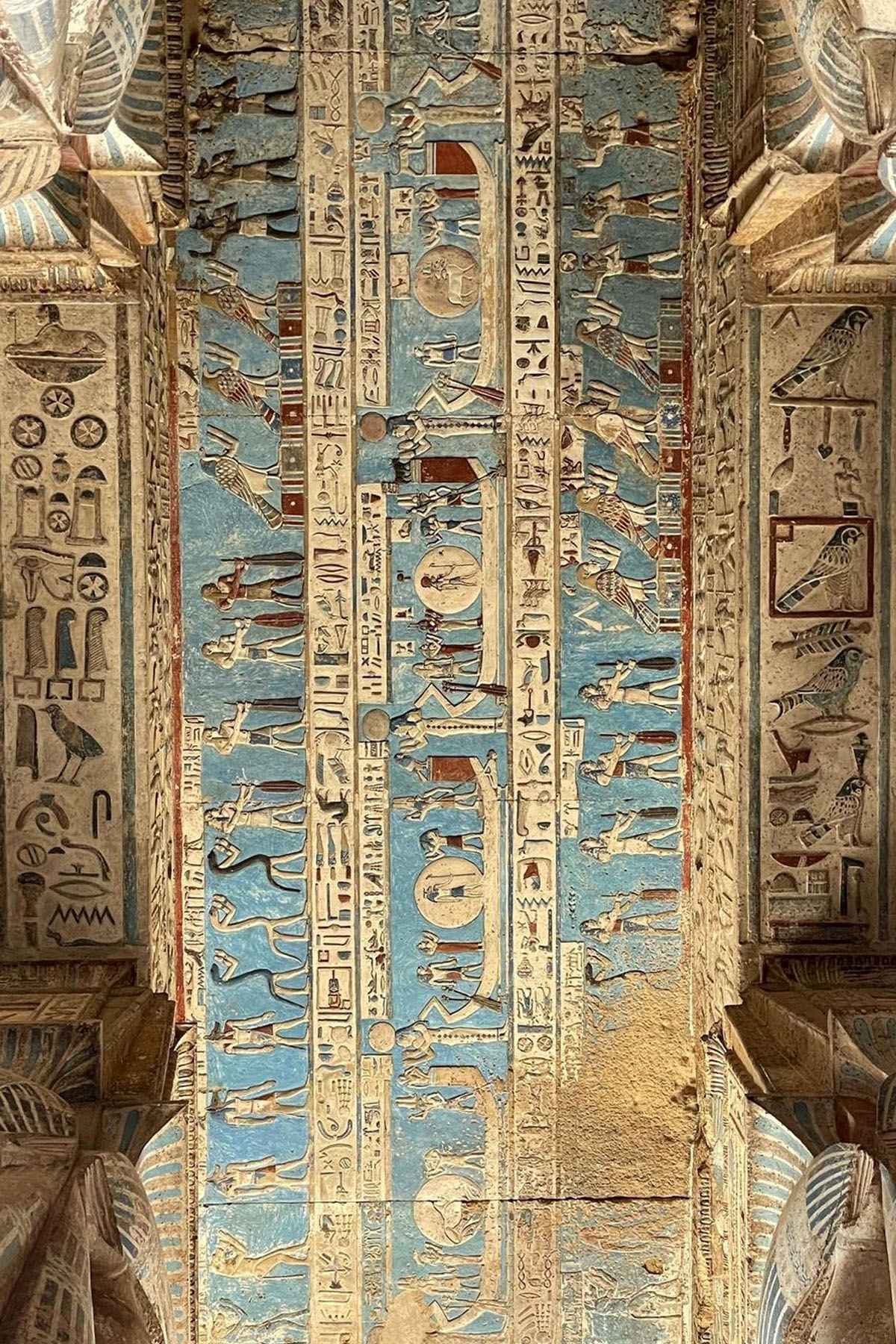
Location: Dendera, about 60 km north of Luxor
Included in a Nile cruise: not included in standard Luxor-Aswan cruises, but often included in longer luxury cruises.
Visit as a day trip from: Luxor (1 hour). Dendera is often combined with Abydos as a day trip package from Luxor.
The Dendera Temple is famous for its vibrant blue reliefs and hieroglyphs that depict astronomical scenes and sky deities.
This Ptolemaic-era temple is dedicated to Hathor, the goddess of love and fertility. And it’s one of the best preserved in Egypt because it was buried in the sand for centuries and protected from the elements.
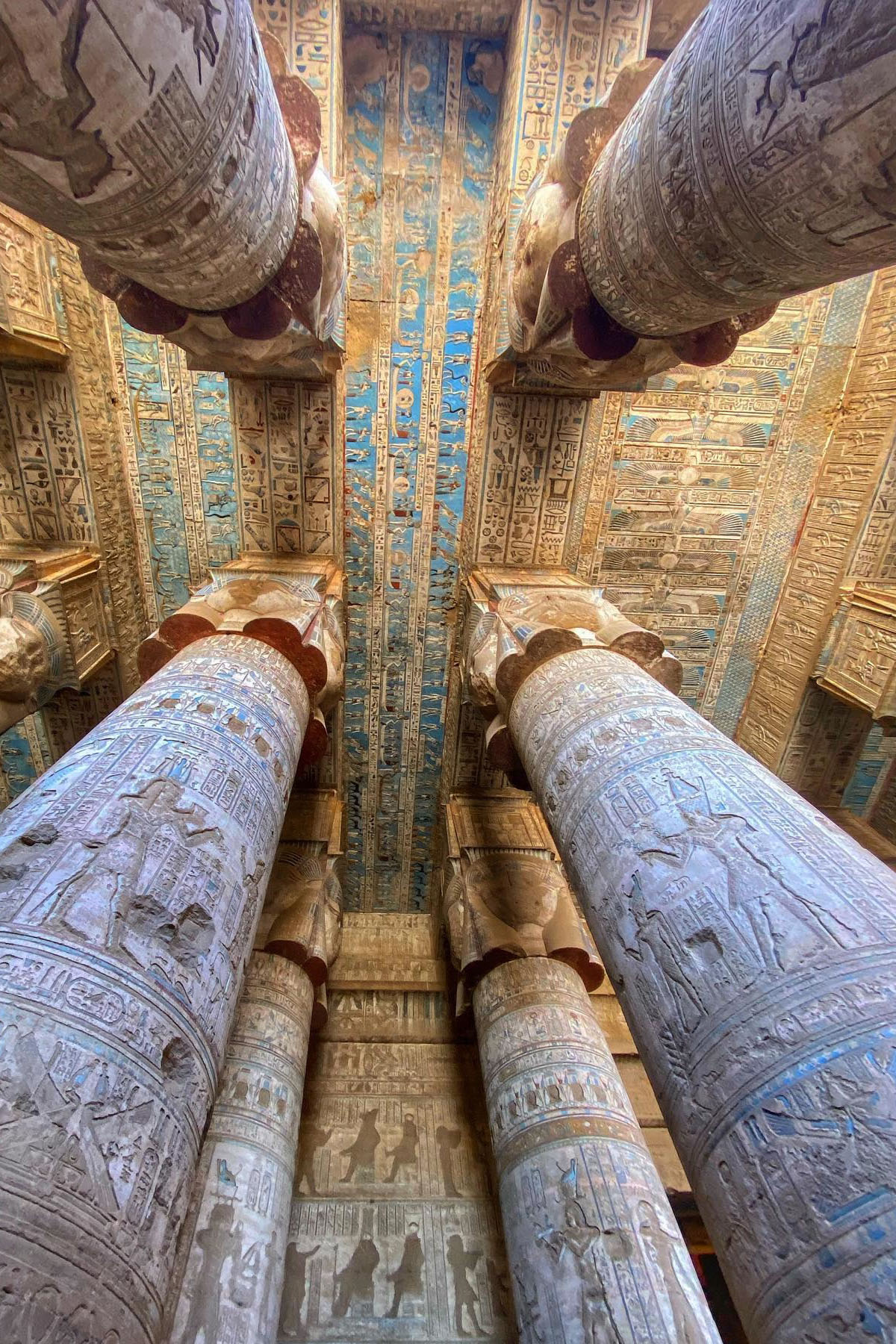
Now it’s one of Egypt’s greatest hidden gems – it’s far less crowded than the famous Luxor temples. But it’s brimming with beautiful depictions that give insights into Egyptian mythology and the Osiris story.
The Dendera zodiac is one of the temple’s best-known reliefs and shows images of the zodiac system that’s still recognizezd today (like the Taurus bull and Libra scales). It also has a beautiful carving of Cleopatra and her son Ptolemy XV, fathered by Julius Caesar.
9. Temple of Seti I
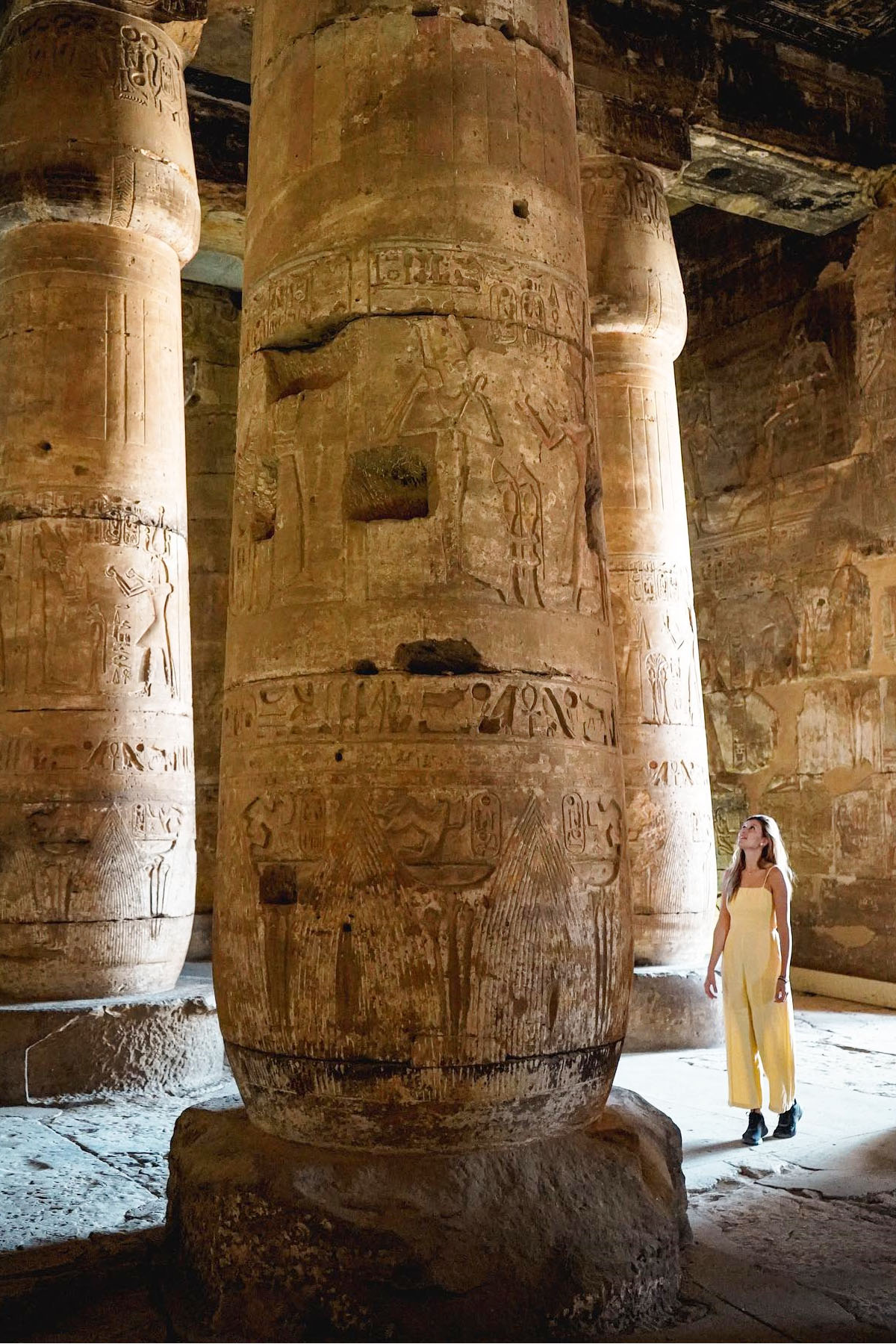
Location: Abydos, about 160 km north of Luxor
Included in a Nile cruise: not included in standard Luxor-Aswan cruises, but sometimes included in longer luxury cruises.
Visit as a day trip from: Luxor (2 hours). Abydos is often combined with Dendera as a day trip package from Luxor.
The Temple of Seti I contains a famous list of kings that helped Egyptologists to piece together a chronology of the ancient world. It also has some unique features that still puzzle archeologists to this day.
The temple is best known for the Abydos King List – a long list of the names of 76 Ancient Egyptian kings (or at least the ones Seti I considered legitimate) in chronological order. This list was instrumental in helping Egyptologists piece together historical timelines.
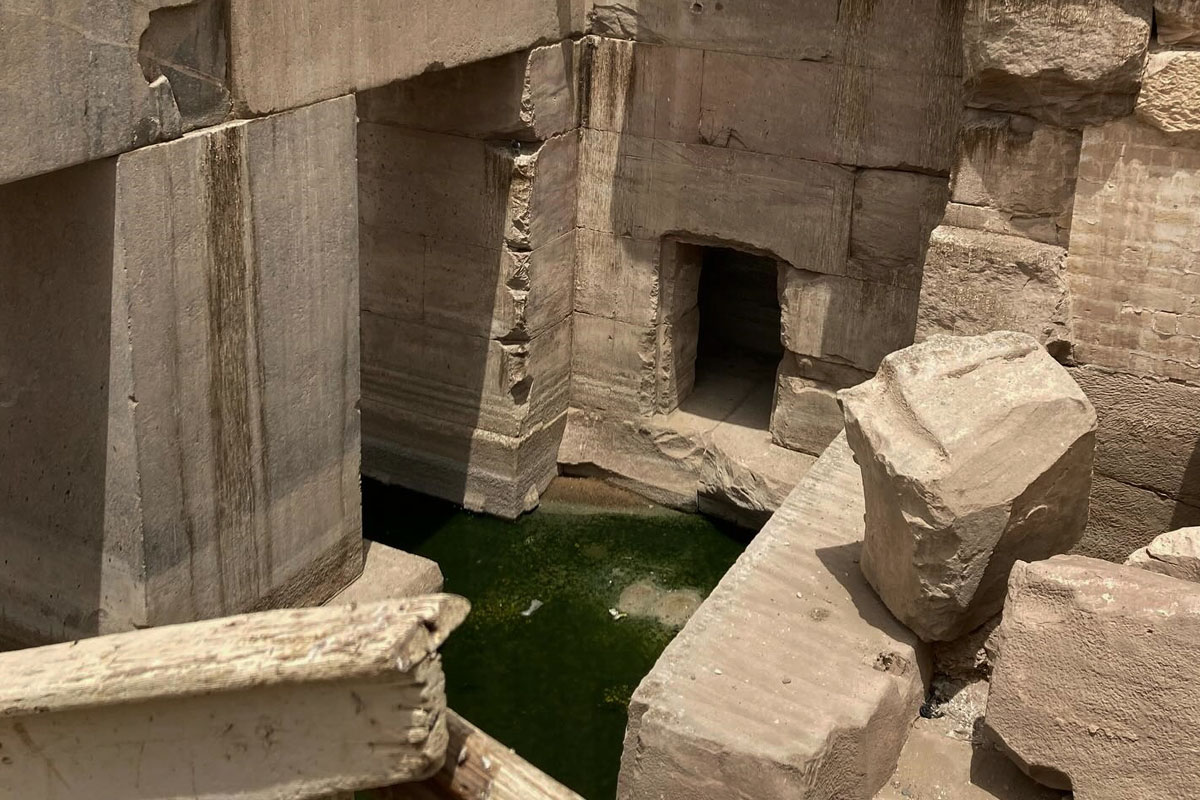
The Temple of Seti I also contains a fascinating osireion (above) – a subterranean complex of large stone blocks. It’s believed to have been a representation of the underworld or perhaps a place for rituals of the Osiris cult.
The temple was maintained for years by Dorothy Eady, a British antiques caretaker who believed she was an Ancient Egyptian priestess in a past life. She lived in Abydos for 25 years and visited the temple daily to pray.
10. Ramesseum
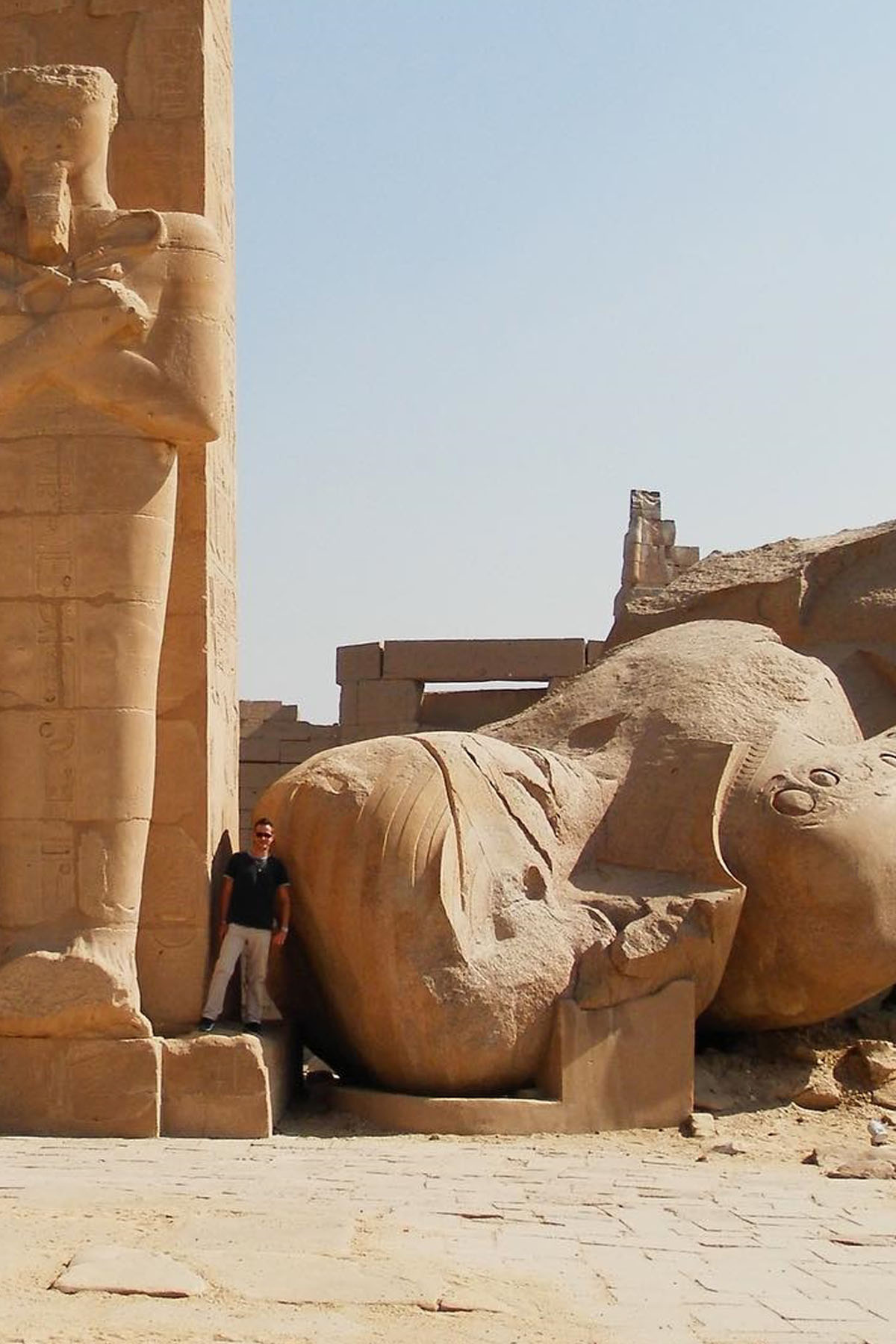
Location: Luxor
Included in a Nile cruise: no
Visit as a day trip from: Aswan (3 hours) or Hurghada (4 hours)
The Ramesseum was the mortuary temple of Ramses II, one of Egypt’s most powerful pharaohs and prolific builders.
It was built to commemorate Ramses II and keep his memory alive. And it contains depictions of some of the pharaoh’s greatest achievements – from his victory over the Hittites at Kadesh to his pillaging of what may have been Jerusalem.
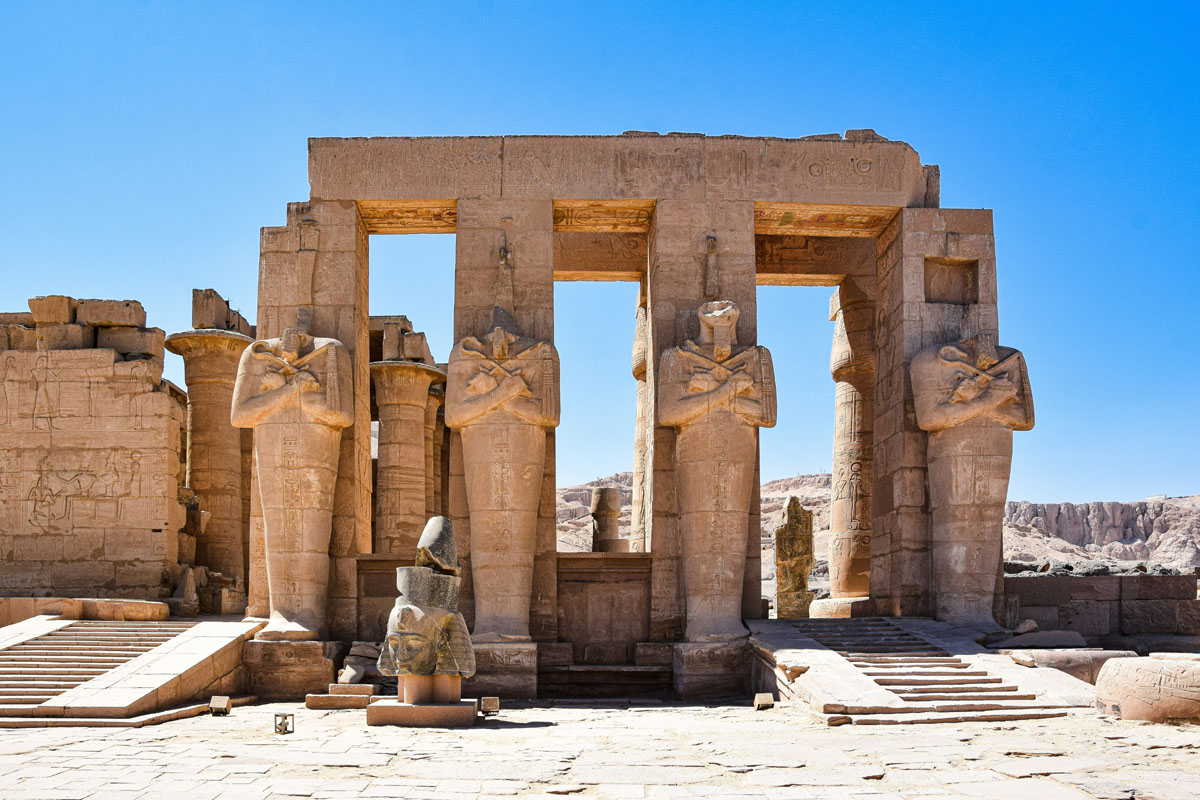
The Ramesseum is a testament to pharaonic might. But it’s also a symbol of the inevitable passage of time and wilting away of empires.
The temple once held a 1,000-ton Ozymandias colossus that towered 19 m and rivaled the Colossi of Memnon. It now lays in scattered fragments in the sand. And this fallen monument in the desert inspired Percy Bysshe Shelley to pen his famous sonnet Ozymandias (with the lines “Look on my Works, ye Mighty, and despair!”)
11. Temple of Ramses III at Medinet Habu
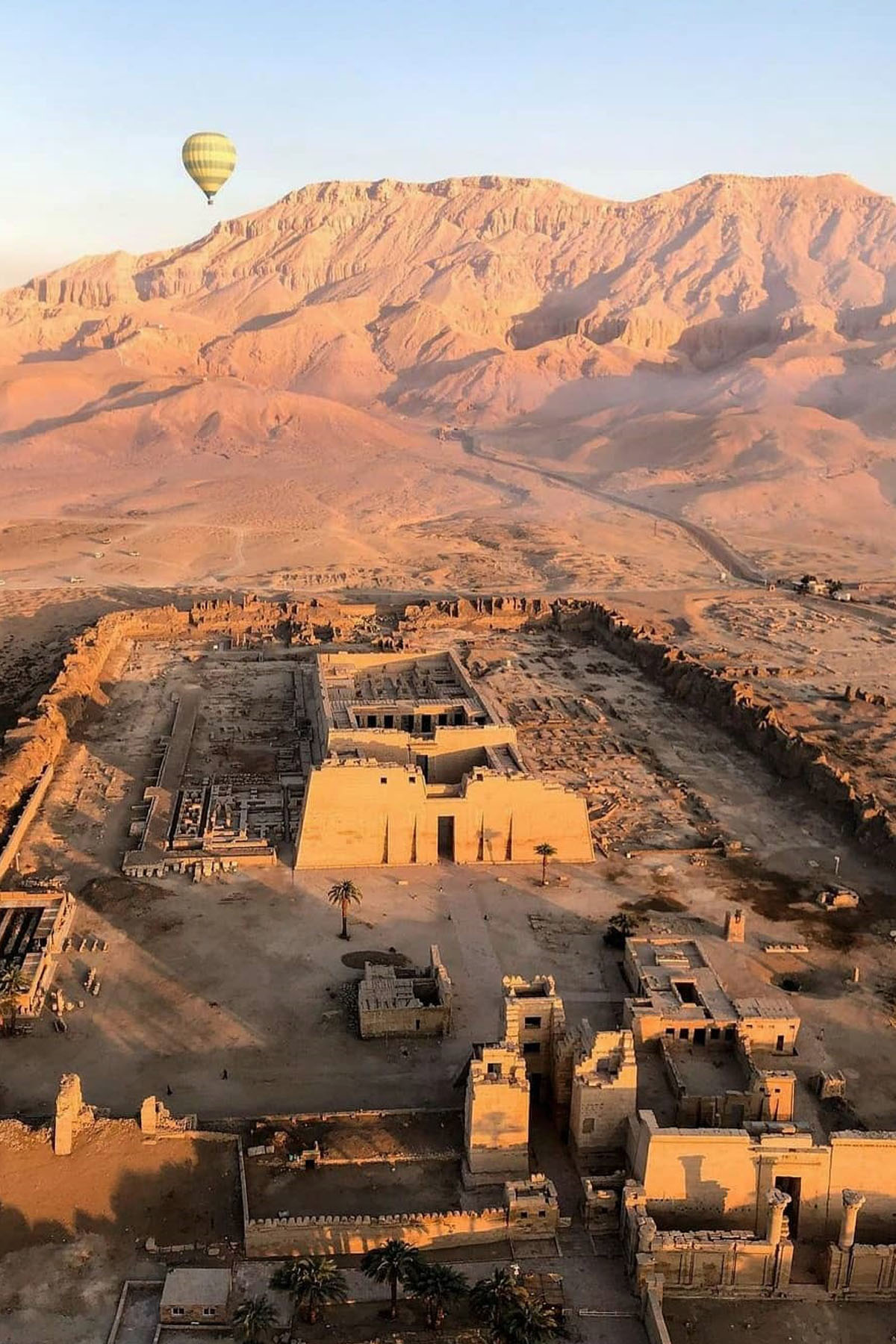
Location: Luxor
Included in a Nile cruise: not included in standard Luxor-Aswan cruises, but often included in longer luxury cruises
Visit as a day trip from: Aswan (3 hours) or Hurghada (4 hours)
The Mortuary Temple of Ramses III pays tribute to the powerful New Kingdom pharaoh with reliefs that depict his triumph over mysterious invaders.
This New Kingdom temple dominates Medinet Habu, an archeological site at the foot of the Theban Hills.
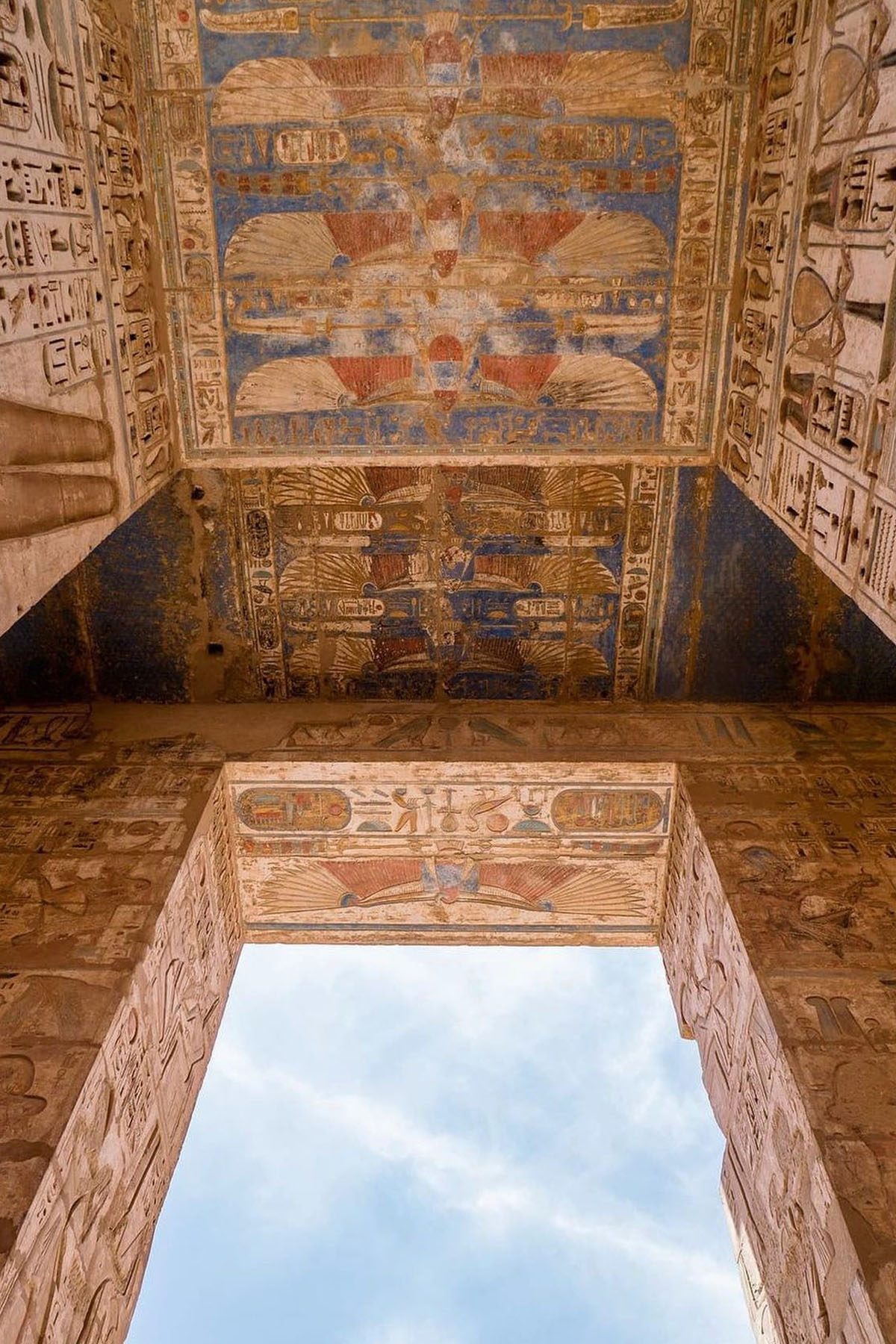
And it contains beautifully-preserved colors and majestic columns with a fraction of the crowds of nearby Karnak and Hatshepsut temples.
The Temple of Ramses III is best known for reliefs of the Battle of the Delta, in which the pharaoh’s armies fight the so-called Sea Peoples. Scholars believe these mysterious invaders likely hailed from modern-day Turkey, Greece and Italy.



